It is difficult to compile an exhaustive list of Saxony-Anhalt’s things to see. Although many visitors from other regions initially know little about this beautiful federal state, there are plenty of impressive places to discover between Altmark and Saale-Unstrut. In addition to its rich UNESCO World Heritage Site, Saxony-Anhalt offers picturesque towns, scenic beauty, delicious food and warm people. That’s why our list of excursion destinations in Saxony-Anhalt has become longer than planned.
1. Brocken with Harz narrow-gauge railroads – With steam to the highest mountain in the north of Germany
A hike to the Brocken is an absolute must for a visit to the Harz Mountains. From here you have a magnificent view, which in good weather reaches as far as Leipzig, which is 100km (60 miles) away. However, the upper part of the top is closed to car traffic. For whom the climb to the Brocken (about 3 hours from Schierke) is too arduous, the Brockenbahn railway offers a stress-free solution to get to the top. The ride is not cheap (31 euros one way, 47 euros round trip) but at least you can go to one of the highest train stations in Germany with a fantastic view.

2. Devil’s Wall – One of the most beautiful natural sights in Saxony-Anhalt
According to a legend, which was already recorded by the Brothers Grimm, the Devil and God quarreled and wanted to divide the world. To separate the kingdoms, the Devil built a wall for this purpose, which he destroyed again out of anger. Well, whether it was the Devil, we don’t know, but the bizarre rock formation stretches about 20 kilometers through the Harz Mountains. It offers great scenery for photos. Take the best pictures of the Devil’s Wall near Weddersleben and Thale.
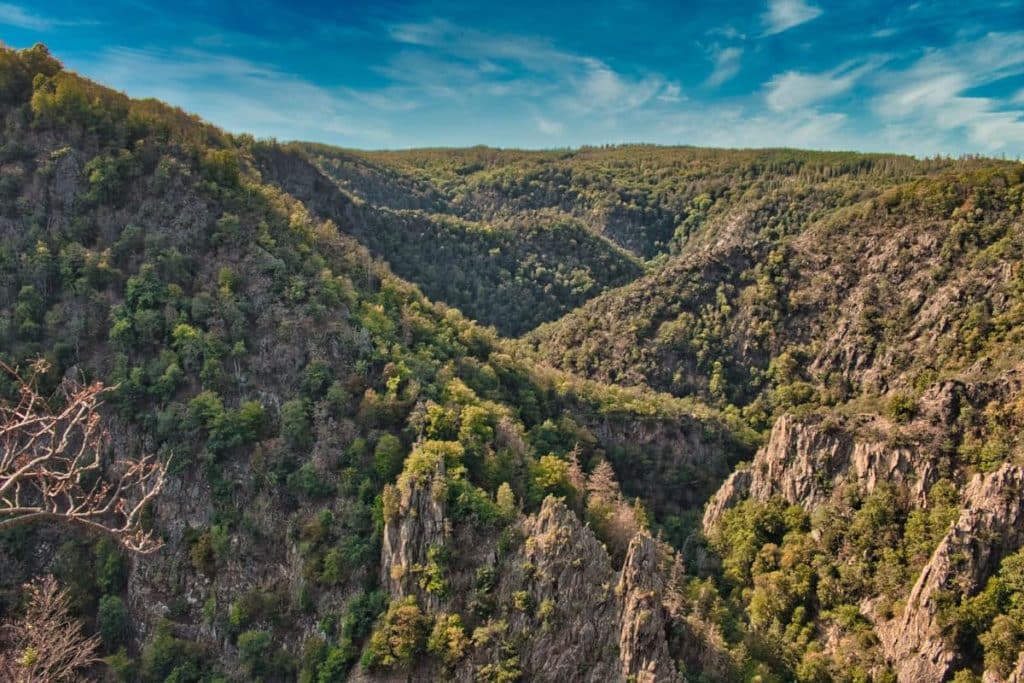
3. Hexentanzplatz and Roßtrappe in Thale – Abracadabra!
The Witches’ Dancing Square (Hexentanzplatz) is also shrouded in legend. Because in pre-Christian times, witches are said to have gathered here every year on April 30th for Walpurgis Night. This is still celebrated every year. In fact, the witch cult plays a certain role in the Harz Mountains and people dress up as witches to attend. Don’t worry though, they are not worshippers of Satan though and just enjoy a fun dance dressed up around a bonfire – or are they?
You also have a good view from the Roßtrappe, which is also one of the most beautiful natural sights in Saxony-Anhalt. It is said that a beautiful princess once jumped off the cliff here on a white horse. Her pursuer Bodo fell into the river, which is said to be called the Bode. As a hellhound, he now guards the princess’s crown. Who knows if this is true. But there really is a hoof-like imprint in the rock. If you want, you can take a cable car to the Hexentanzplatz (return journey 7 euros) or the chairlift to the Roßtrappe (return journey 4.50 euros).

4. Rappbodetalsperre – Dizzy in the Harz Mountains
The largest dam in the Harz Mountains and in Germany is a child of socialism. It was built during the times of the German Democratic Republic (GDR) from 1952 to 1959 for the production of drinking water and electricity. It’s 106 meters (347 feet) tall and the view over the whole facility is quite impressive. It gets a little dizzier, however, from the newly built Titan RT suspension bridge (6 euros admission) right next to it.
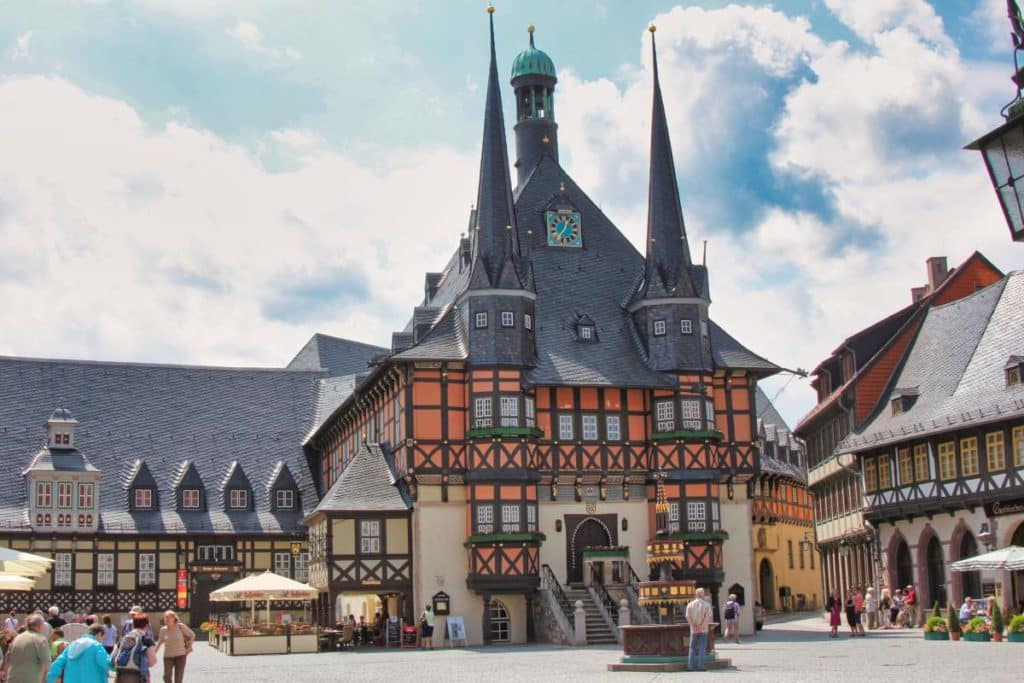
5. Wernigerode – The classic in the Harz mountains
Wernigerode is not only the best base for exploring the Harz Mountains. The city itself is well worth seeing. The town hall is one of the most beautiful in Germany and has to serve for many postcards and Instagram photos. The surrounding old town boasts, among other things, the smallest house in Germany. There are 11 people said to have lived there – at the same time. You won’t believe it when you see it. The steam trains run from the Wernigerode station of the Harz Narrow-Gauge Railways to Nordhausen and the Brocken. In the Miniaturland, there are models of the most important sights in the Harz region. And the Aviation Museum offers a collection of impressive aircraft and flying machines. Many of them come from the times of the GDR. Others are even from the early days of aviation.

6. Quedlinburg – one of the most beautiful half-timbered towns in the world
The old town of Quedlinburg with its hundreds of half-timbered houses can easily compete with other medieval towns in Germany like Rothenburg ob der Tauber. From the collegiate church, whose first buildings were built under German king Heinrich I in the 9th century, you have a beautiful view of the Harz Mountains and the surrounding old town. Incidentally, it was here that the state of Lithuania was first mentioned. This UNESCO World Heritage Site should not be missed on any tour of eastern Germany.
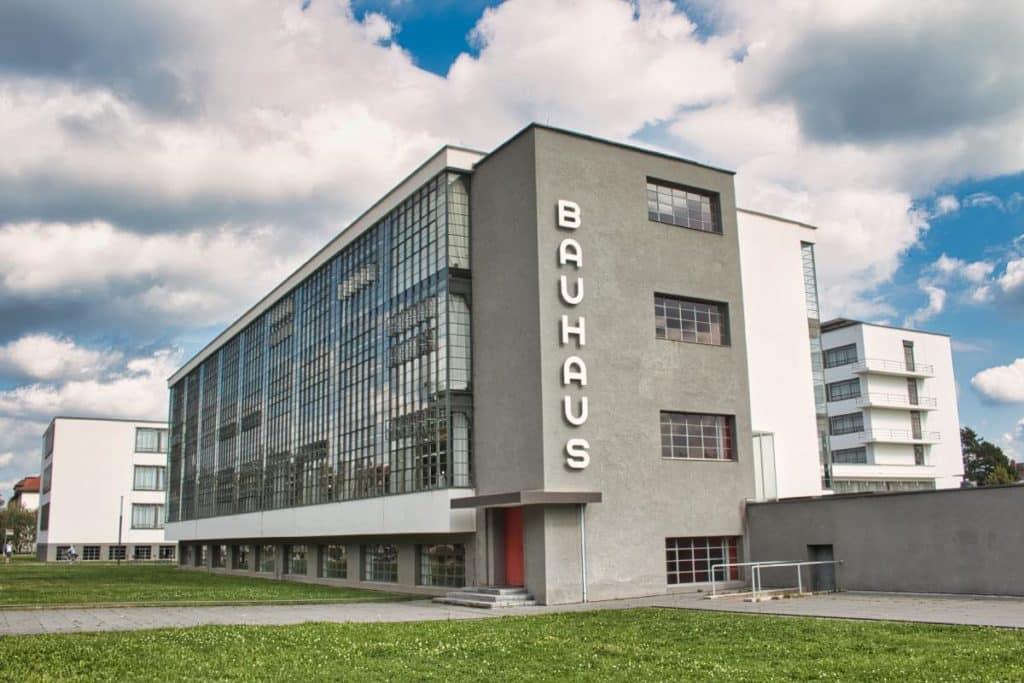
7. Bauhaus in Dessau – Pilgrimage site of modernism
The Bauhaus is considered to be the cradle of modernism and a place where artists could really try things out. You can still admire some of the best creations in Dessau today. Dessau was home to the Bauhaus from 1925 to 1932. Not only was the school’s building built here, which is considered an icon of modernism.
The Masters’ Houses were also built here, where the famous Bauhaus teachers such as Walter Gropius and László Moholy-Nagy lived. The Törten housing estate and the old employment office were also model experiments by the Bauhaus artists.

8. Wörlitz Park – relaxing in the Unesco World Heritage Site
Wörlitz Park is one of the most beautiful attractions in the East. The Dessau-Wörlitz Garden Realm is a UNESCO World Heritage Site. The park offers a real oasis of peace with artificial lakes, many different types of plants and beautiful buildings from the time of the Anhalter principality. Here you can easily imagine how the princes of Anhalt once walked through the park and talked animatedly. The Wörlitz Palace or the Gothic House definitely make beautiful backdrops for your photos.
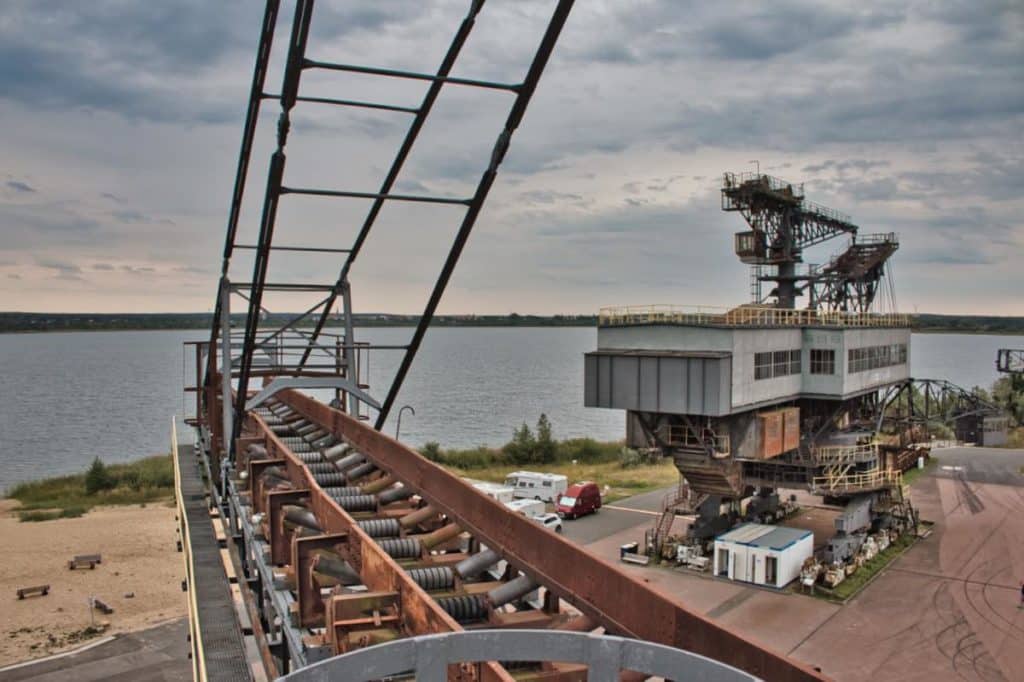
9. Ferropolis – City of Iron
Expo 2000 made waves as far away as Saxony-Anhalt. What was originally a student’s thesis became reality as an industrial museum. Ferropolis – City of Iron, that’s the name of this work of art created from an open pit mine.
Located near Bitterfeld, the open pit mine is flooded and the huge excavators and other machines were combined on a peninsula in the lake to form a festival site with a museum and many other small attractions. Ferropolis is especially worth seeing when festivals like Melt take place here, but it’s also worth exploring otherwise.
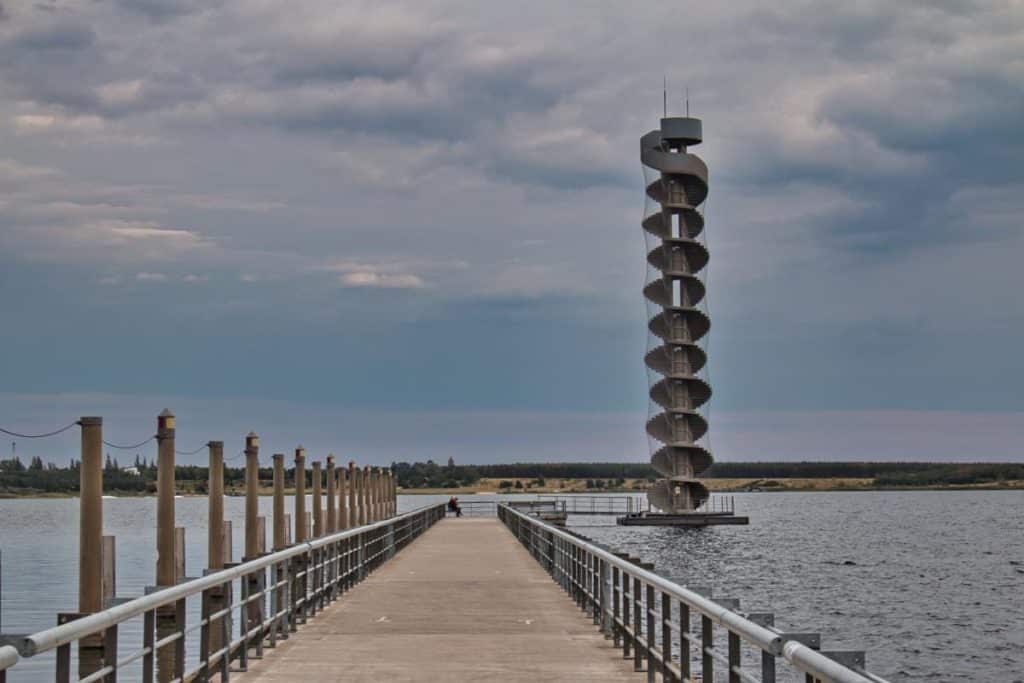
10. Goitzsche – Lake with a level
Also a flooded open pit mine, the Goitzsche is now one of the most popular lakescapes in the East. Thousands of people flock to the beaches in summer. You can also explore the area by bike on well-maintained paths. And the Water Level Tower offers a beautiful view of this huge renaturation project. It’s hard to believe that the Bitterfeld region was once considered the dirtiest place in eastern Germany before the unification.
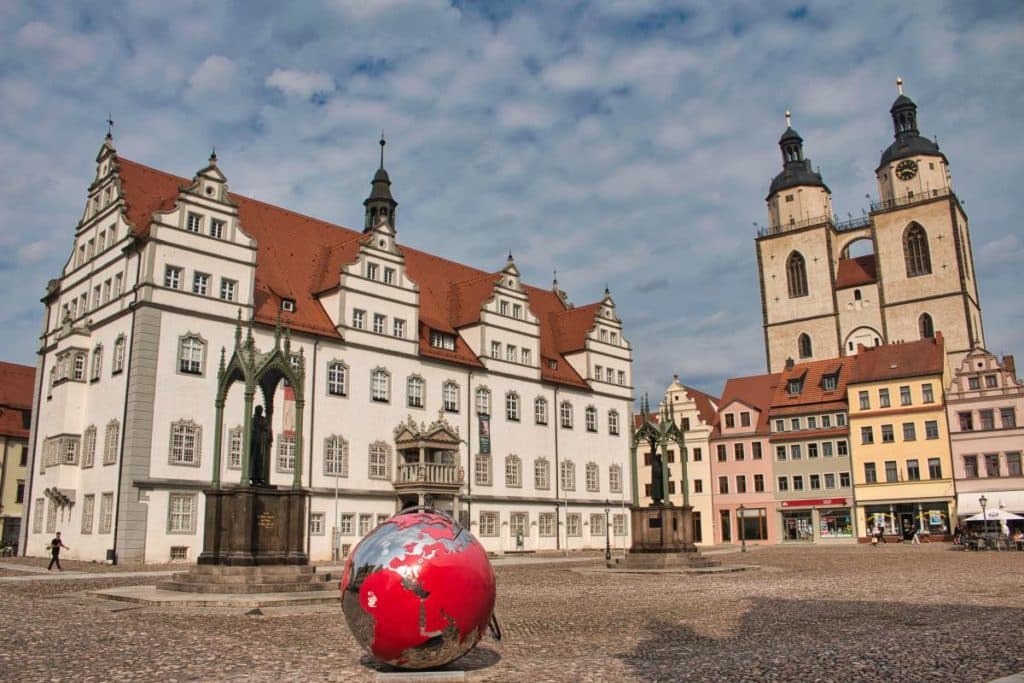
11. Lutherstadt Wittenberg – Cradle of the Reformation
Wittenberg is best known as the city of Luther. It is here that the reformator Martin Luther is said to have nailed the 95 theses to the door of the Castle Church in 1517. Whether this is what really happened this way has not been clarified to this day. But it is undeniable that the Reformation was unstoppable after that. And the city is beautiful in any case.
Not only the Castle Church, but also the Castle, the Cranach House, the Luther House, the Melanchton House and the City Church of St. Martin belong on the visit program for the best Saxony-Anhalt things to do. Wittenberg is also home to a building created by artist Friedensreich Hundertwasser: He transformed a typical GDR panel-building school into a real work of art. And the Piesteritz factory housing estate is a real masterpiece of post-World War I architecture.
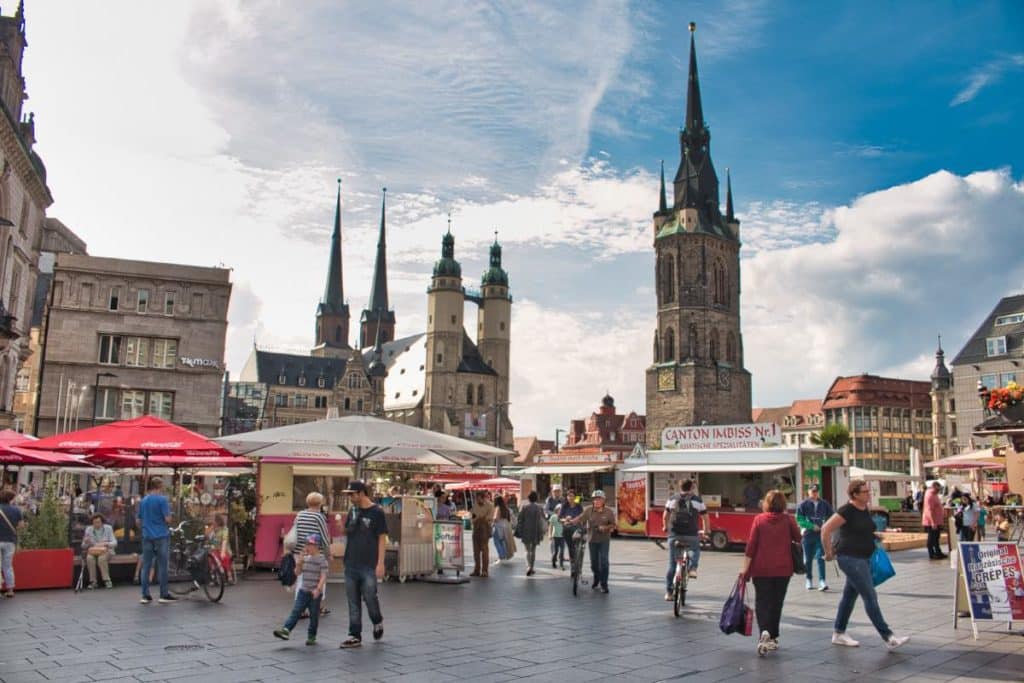
12. Halle (Saale) – Historic beauty with medieval charme
For a long time, Halle was considered to be the region’s dirty child, with chemical combines and Riebeckplatz as one of the worst places in East Germany in terms of traffic, it was long overshadowed by nearby Leipzig. However, Halle has now transformed itself from its rough post-reunification image into an impressive tourist destination. The picturesque Hallmarkt with its impressive ensemble of towers and historic buildings is a wonderful sight.
The Unesco World Heritage Site of the Francke Foundations is a symbol of education and charity. Together with the Saline Salt Museum, the city takes you back to the Middle Ages. With the Nebra Sky Disk, the State Museum of Prehistory takes you even further back, to one of the first traces of astronomy in the world. For architecture lovers, Halle-Neustadt is a must-see with its unique GDR architecture and urban flair.
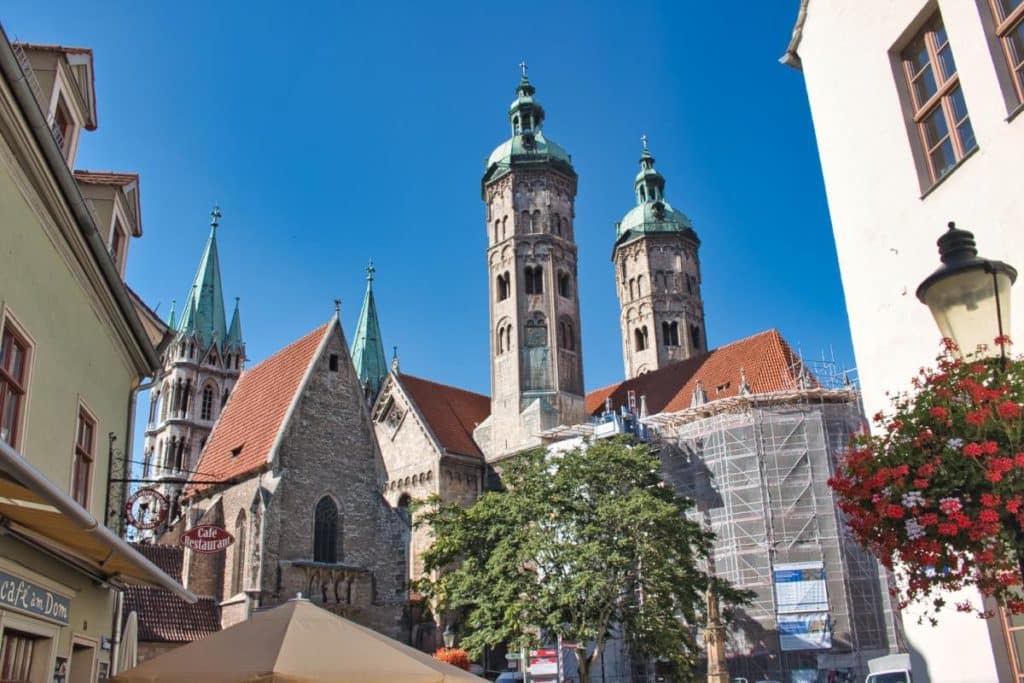
13. Naumburg Cathedral – Germany’s most beautiful woman and church
Saxony-Anhalt has some of the most beautiful churches in eastern Germany to offer. Magdeburg Cathedral or Halberstadt Cathedral are beautiful, but have not yet been recognized as UNESCO World Heritage Sites. Therefore, I can highlight Naumburg Cathedral at this point, which definitely belongs on any list of sights in Germany with its founder figure Uta. Incidentally, this is also where a Protestant bishop was first installed. Nikolaus von Amsdorf was a close companion of Martin Luther.
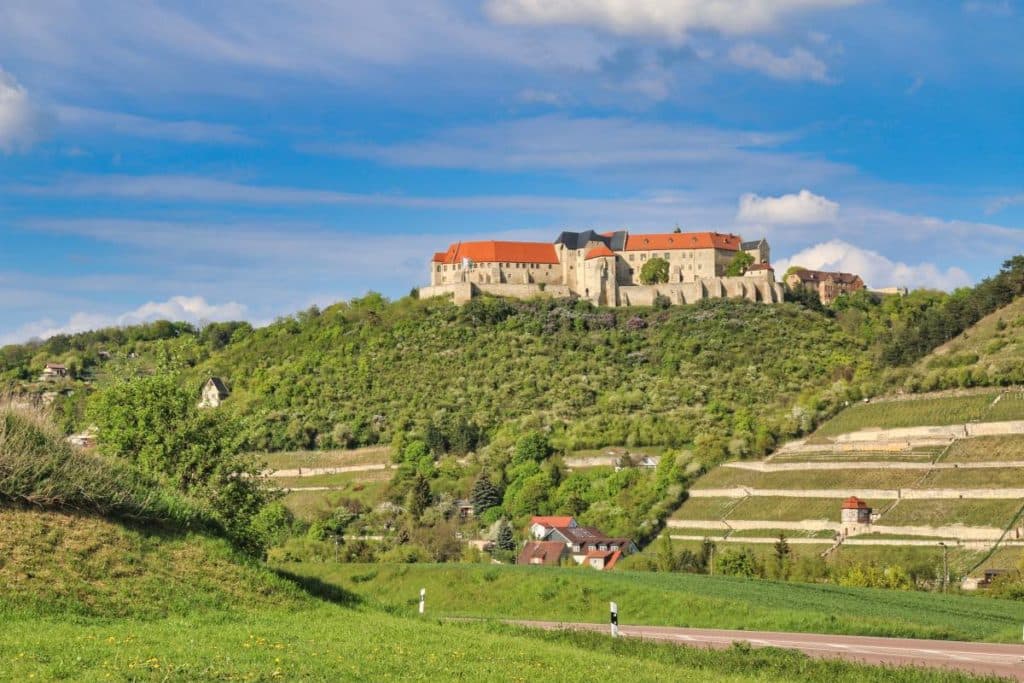
14. Freyburg (Unstrut) – Wine or sparkling wine?
Freyburg may be a small town, but it has a lot to show for its size. Besides the churches and the impressive Neuenburg castle next door, there is a real gymnasium here. That’s because Friedrich Ludwig Jahn, who is considered the father of gymnastics in Germany had a gymnasium built here according to his ideas when he lived in the town. The Rotkäppchen sparkling wine cellars are also located here. And in the surrounding vineyards there are wonderful wines, for example at the Frölich-Hake winery.
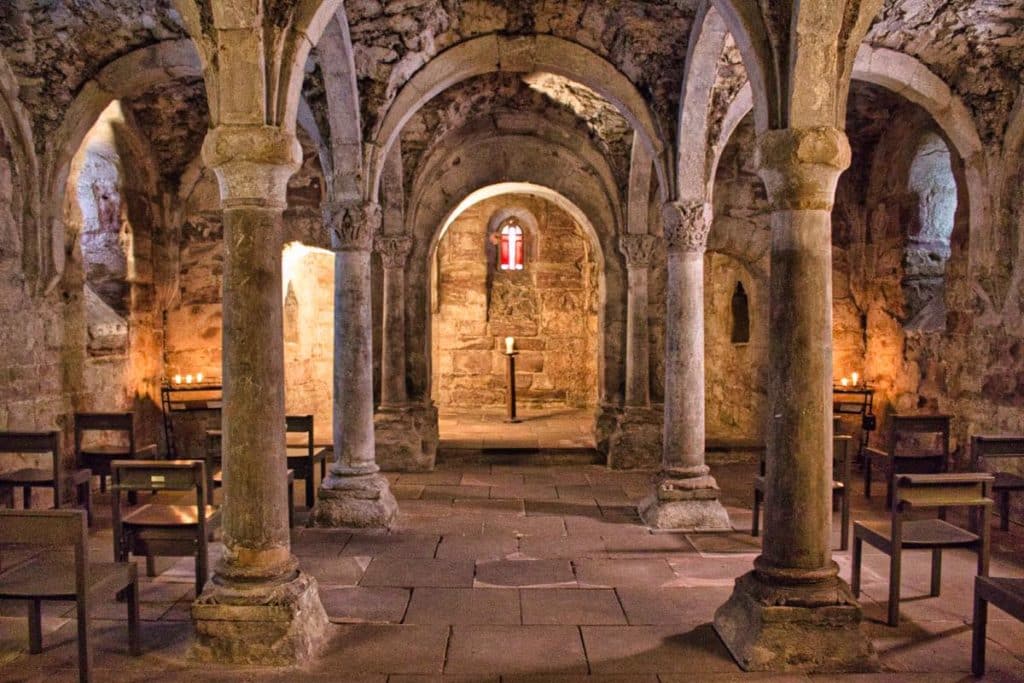
15. Memleben Monastery – not just for goths
With its round arches in the crypt, Memleben Monastery is one of the most photogenic places in Saxony-Anhalt. The monastery church was founded by Otto I, who is said to have died here just like Henry I. However, the exact location is still a mystery to researchers today.
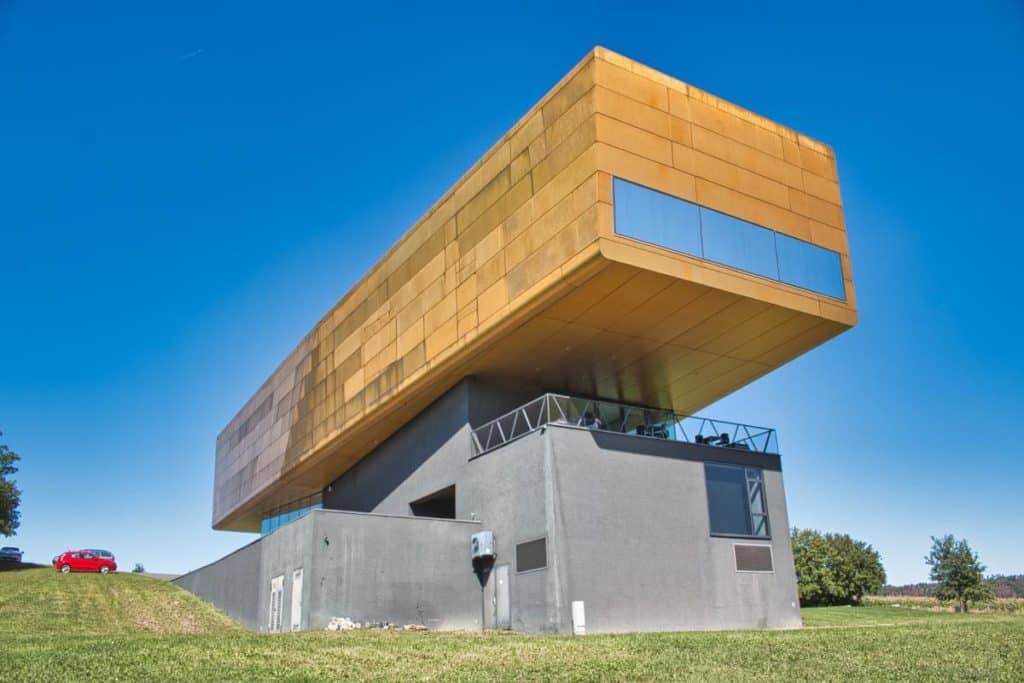
16. Nebra Ark – Astronomy for beginners
The famous Nebra Sky Disk was discovered in Nebra and is considered one of the most important archaeological finds of the millennium. Even though the disk itself is now on display in Halle, the context of its creation is shown here and numerous myths surrounding the disk are uncovered. Was the sky disk really a star map? Here you will find an answer to this question.
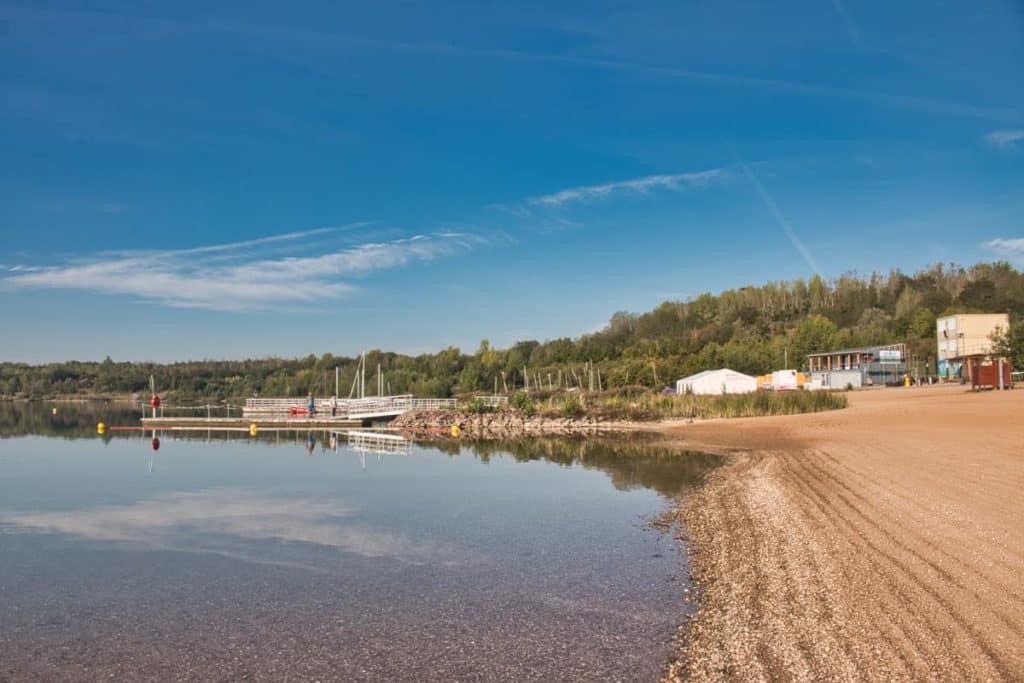
17. Geiseltalsee – Mining can be so beautiful
There are now several flooded open-cast mines in Saxony-Anhalt. The Geiseltalsee is the newest one so far and is quickly becoming a crowd puller. There is a boat marina in Mücheln and some bike paths. The water is a cool refreshment.
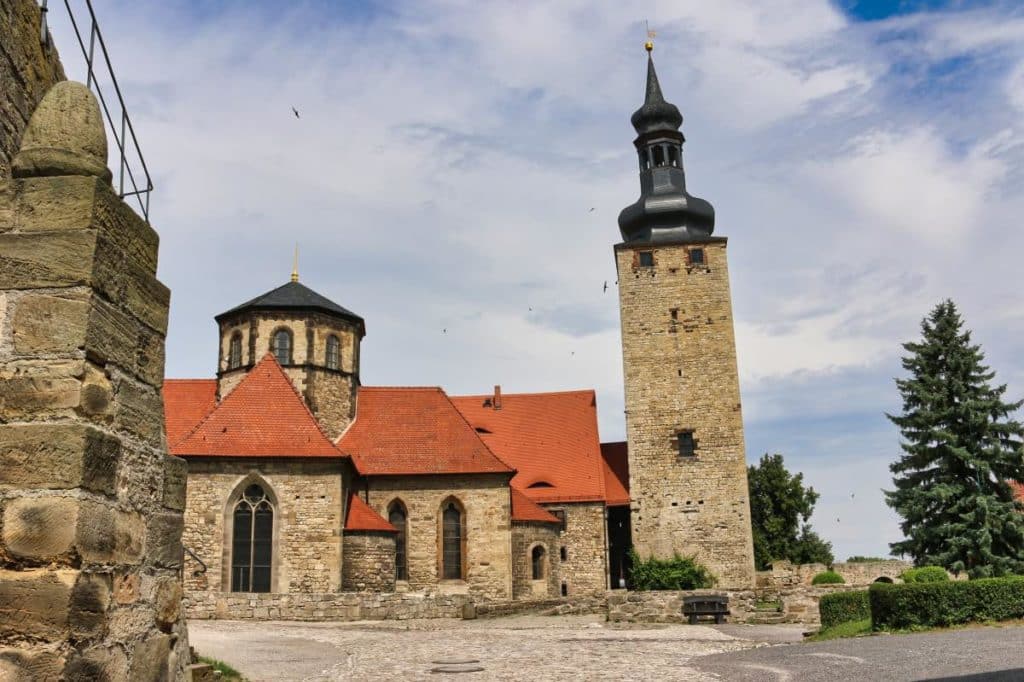
18. Querfurt Castle – film set for the Middle Ages
While Vitzenburg has something rather classical about it, Querfurt Castle is what you would imagine a real medieval castle. Thick walls, round towers and old weapons bear witness to the times when real knights were still in charge here. Today, it is sometimes the East German TV station MDR that has some scenes for medieval programs re-enacted here from time to time. A visit is definitely worthwhile and climbing the tower is a point of honor.
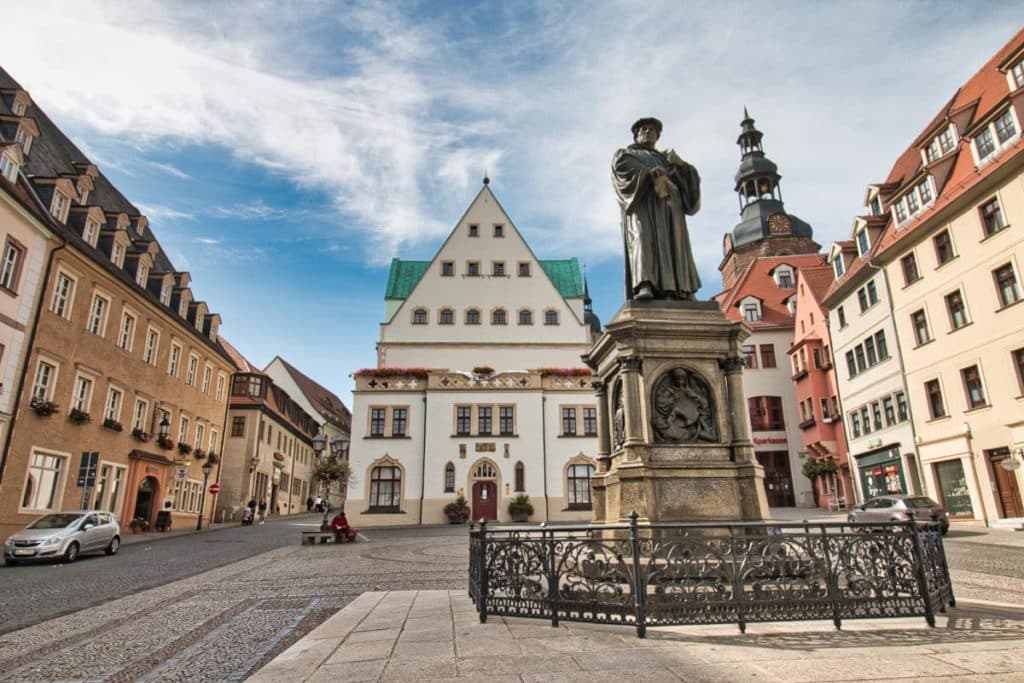
19. Lutherstadt Eisleben – Not just Luther
Eisleben is not only the birthplace of Martin Luther. It is also the town where he happened to die. Because he was actually just passing through. In Eisleben you will not only find Luther’s birthplace, but also the house where Luther died.
There is also the baptistery of St. Peter and the church of St. Andrew, where he preached his last sermon. The market square with the Luther monument is a great photo opportunity. And if you are Catholic (or not), you might also like the Helfta Monastery, where nuns still live today and which you can visit.
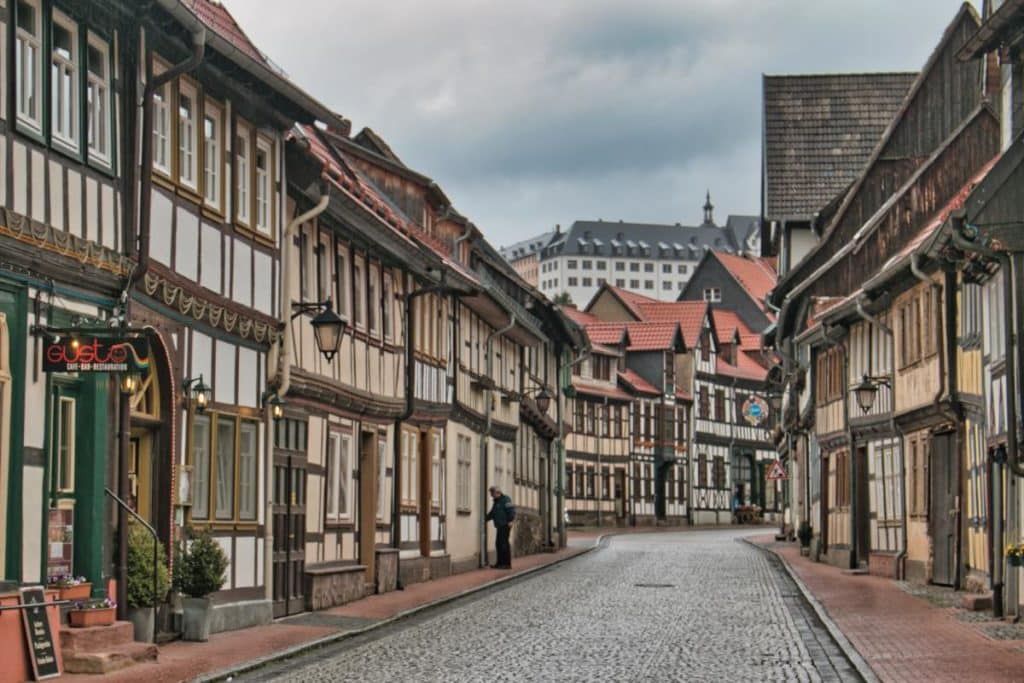
20. Stolberg in the Harz Mountains – A must on foot
With its half-timbered houses, Stolberg takes you on a journey back in time to the Middle Ages, when the town was still ruled by counts. Thomas Müntzer was born here and several battles of the German Peasants’ War took place near Stolberg. The castle of the Counts of Stolberg is one of the most beautiful in the Harz Mountains. And the coffee houses serve delicious cakes from the region.
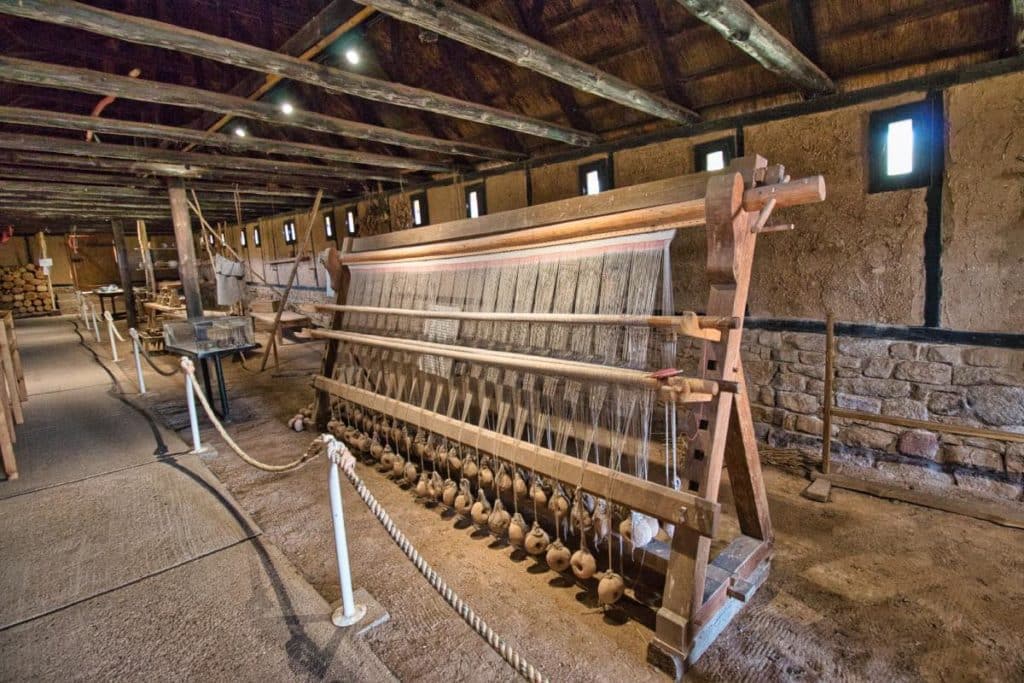
21. Ruins of the Imperial Palace of Tilleda – Redbeard’s retreat
By a hair’s breadth, this sight would be in Thuringia, but German reunification cares little for this roughly thousand year old common. The Kyffhäuser with the monument of German Emperor Barbarossa (Red Beard) is therefore located in Thuringia and is thus represented in our list of sights in Thuringia. The imperial palace of Tilleda, however, scores in Saxony-Anhalt and makes the Saxony-Anhalt sights even more extensive.
The open-air museum Kaiserpfalz Tilleda now houses replicas of some of the buildings from the time when Tilleda was one of the most important places in the empire. The list of emperors who used Tilleda as a palace reads like a Who’s Who of the Middle Ages: Otto I, Otto II, Henry III, Frederick I Barbarossa, Henry VI. The only strange thing, therefore, is that the palace was completely deserted from the 13th century onwards and was only rediscovered in the 20th century.
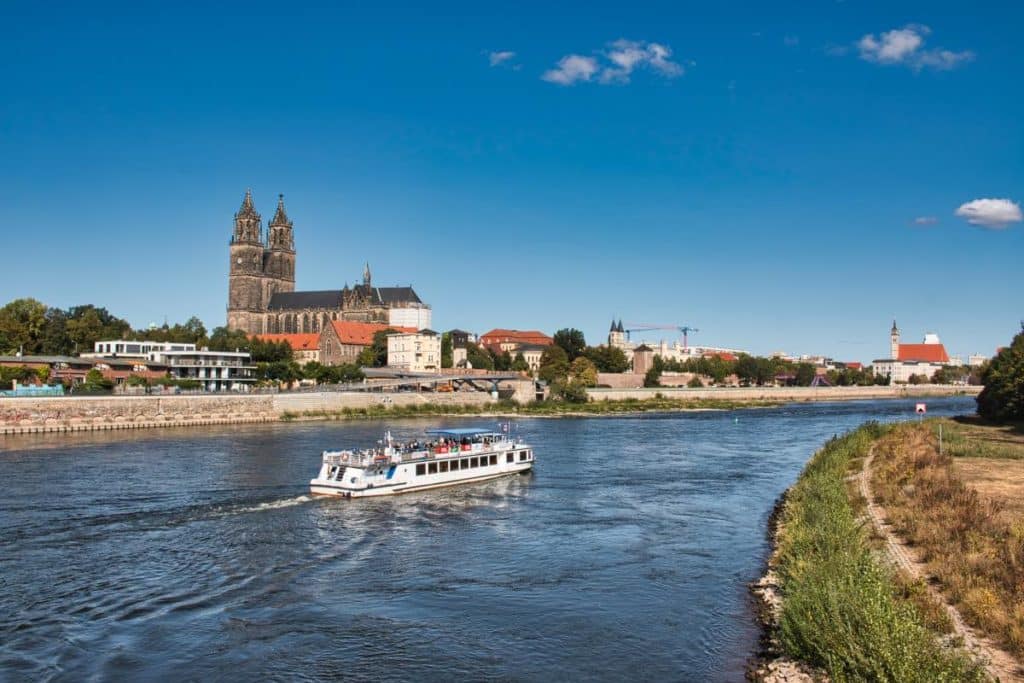
22. Magdeburg – Hundertwasser and the banks of the Elbe
Magdeburg has emerged from the ruins of the Second World War to become a fascinating destination, offering a perfect blend of historical splendor and modern architecture. The heart of the city is Magdeburg Cathedral, the first Gothic cathedral on German soil, which offers impressive views over the Elbe and the city from one of its two majestic steeples. Nearby is the Monastery of Our Lady, a former convent that now serves as an art museum.
It is also home to the Green Citadel, the last and extraordinary project by the famous Austrian artist Hundertwasser, known for his unique architecture and the integration of nature into his buildings. And the Millennium Tower in the Elbauenpark, which was built as a temporary structure for the 1999 Federal Garden Show but has been preserved as the tallest enclosed wooden building in the world due to its popularity and uniqueness, is also unique.
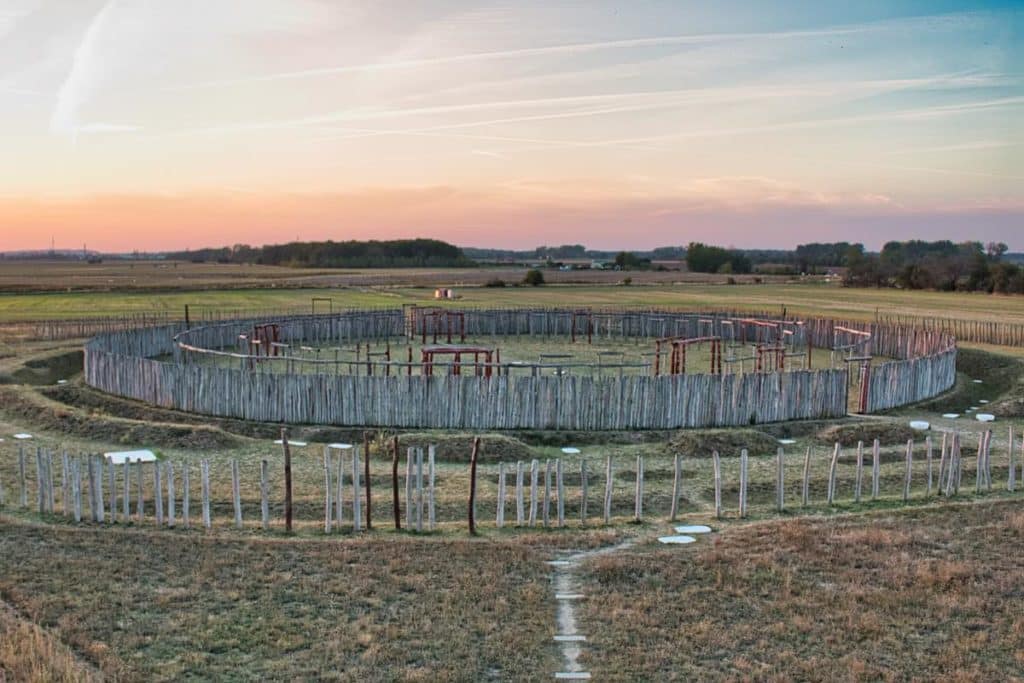
23. Pömmelte Observatory – Stonehenge made of wood
Although Pömmelte is a bit outside of Magdeburg, the small village is home to another small Stonehenge. For archaeologists have discovered here another circular ditch. A solar observatory was therefore erected on the former cult site using wood. Since it’s painted in color, this place also makes for some good photos and is worth checking out, especially if you’re traveling by car anyway.

24. Stendal – Heart of the Altmark
Stendal is the heart and the largest city of the Altmark. Stendal was once an important Hanseatic town. The impressive North German brick Gothic buildings also date from this time. Among the sights are:
- St. Nicolaus Cathedral
- St. Marys Church
- St. Jacobs Church
- St. Peter Church
- St. Anna Church
- Town Hall
- City Gates
The town is also home to the Ramelow department store, which was built in 1930 in the Bauhaus style and since reunification has once again housed a textile department store run by the original owner family.

25. Tangermünde – Not just for Berlin day tourists
This charming little town, where time has stood still since the Middle Ages, lies at the mouth of the River Tangier into the Elbe. Tangermünde has faithfully preserved the charm of the brick Gothic period. The views of the skyline from the banks of the Tangier and Elbe rivers make for a beautiful photo backdrop, especially in the morning.
Incidentally, we are not the only ones who think that the town is one of the most beautiful small towns in Germany. In a Travelbook poll, tourists from all over Germany voted Tangermünde the most beautiful small town in Germany.

26. Jerichow Monastery – Monk for a day
In a similar style to the buildings of Tangermünde, the Jerichow Monastery is also preserved. It was built in the late 12th century and shows elements of both Romanesque architecture and Nordic Brick Gothic. The monastery is one of the most beautiful stops on the Romanesque Road.
27. Marienborn Memorial – Experience the eternal Wall
In GDR times, the Marienborn memorial was the border crossing point into the GDR on the transit route from Helmstedt to West Berlin. Motorists were questioned and frisked here. It is a symbol of the division of Germany. Today, the memorial site displays an exhibition about the division and border controls and commemorates the fate of those who died trying to escape to West Germany.
The most important Saxony-Anhalt travel tips
Climate
Saxony-Anhalt lies in a temperate climate zone and is characterized by the foothills of the Atlantic winds and the Eastern European continental climate. Mild summers are followed by relatively cool winters, which can be significantly cooler than the average for Germany as a whole. It can get quite cold in the Altmark in winter, as there are no mountains to influence the weather here. In the Harz Mountains, it gets quite cold in winter, especially at higher altitudes. There is also significantly more snow and rain here than in the more urban regions of Saxony-Anhalt. A small consolation: summers in Saxony-Anhalt are often much drier than in western Germany, for example.
Best time to travel to Sachsen-Anhalt
The best time to visit Saxony-Anhalt naturally depends on your personal interests. Are you planning a visit to Wernigerode, Naumburg or Quedlinburg with their wonderful city centers? This is of course possible all year round. In summer, however, it can get very crowded, especially in the Harz Mountains. Ideally, you should spend your time in the Harz in the off-season, i.e. in spring and fall. If you prefer to visit the countless forests and mountains of Saxony-Anhalt, summer is ideal. There is also usually a lot going on at the lakes, such as the Geiseltalsee or the Goitzsche. And in winter, when the snow covers the Harz Mountains and especially the summit of the Brocken in a soft white, the Harz Baumkuchen tastes even better with a sip of mulled wine from the Christmas market.
Special Routes
There are various ways to explore the things to see in Saxony-Anhalt. The quickest way is by car. However, you can also get anywhere by public transport. However, some routes are particularly worthwhile by bike.
By car
- Straße der Romanik – Romanesque Road – two routes to some of the most beautiful buildings in eastern Germany
- Deutsche Alleenstraße – German avenue road – by car along the prettiest avenues in the state
- Deutsche Fachwerkstraße – German Half-Timbered House Route – marvel at the most beautiful half-timbered houses from the Harz Mountains to the Thuringian Forest
By bicycle
- Elberadweg – Elbe bike route – leads past Dessau and Magdeburg on to Tangermünde, Brandenburg and Lower Saxony
- Europaroute D3 – European route D3 – from the Harz Mountains to the Fläming
- Altmarkrundkurs – Altmark circuit – cycle through the entire Altmark region, past the beautiful brick buildings
- Himmelsscheibenradweg – Sky disk bike route – on the trail of the first astronomers in Saxony-Anhalt
- Saaleradweg – Saale bike route – along one of the most beautiful river valleys in the east
By train
The following routes are worth taking with the regular trains because of their beautiful views:
- Naumburg – Wangen (Unstrut) – beautiful route in the south of Saxony-Anhalt
- Dessau-Wörlitzer Eisenbahn – Dessau-Wörlitz Railway – connecting the Bauhaus metropolis and the Wörlitz Park
- Magdeburg-Thale – from the Cathedral to the mountains
Narrow-gauge railroads
In Saxony-Anhalt there are also some narrow-gauge railroads where you can not only enjoy the beautiful technology, but also look out over fantastic landscapes.
- Harzer Schmalspurbahnen – Harz narrow-gauge railroads – extensive network of several lines including the Brockenbahn, Harzquerbahn and Selketalbahn
- Rübelandbahn – a small but beautiful narrow-gauge railroad on a picturesque route in the Harz Mountains
- Mansfelder Bergwerksbahn – Mansfeld Mining Railroad – former railroad for copper miners, now used for weekend trips
Public transport in Saxony-Anhalt
Long distance trains
Of course, you can also use the long-distance trains of Deutsche Bahn in Saxony-Anhalt. ICE trains stop mainly in Halle (Saale). But they do so every hour. And from here you have a first-class connection to Munich, Frankfurt or Berlin. Other long-distance stops in Saxony-Anhalt are:
- Bitterfeld
- Dessau Hbf
- Halle (Saale) Hbf
- Köthen
- Lutherstadt Wittenberg Hbf
- Magdeburg Hbf
- Naumburg (Saale) Hbf
- Stendal Hbf
- Weißenfels
Local transport
The following transport companies are responsible for local transport in Saxony-Anhalt:
- Mitteldeutscher Verkehrsverbund (MDV)
- Magdeburger Regionalverkehrsverbund (marego)
- Nahverkehr Sachsen-Anhalt (NASA)
Especially in and around the larger centers of Halle, Magdeburg and Dessau, the network is dense and the frequency is good. Outside the major cities, the transport connections in the smaller and medium-sized towns are still well organized, at least during the day. However, if you want to travel to the countryside, you should find out about the routes well in advance and allow plenty of time. In some regions of Saxony-Anhalt, there are hardly any buses and most of the traffic is school transport.
Regional tickets
If you don’t have a Deutschland-Ticket, regional tickets can help you get around Saxony-Anhalt by public transport. Here are the most important tickets.
Hopper-Ticket
The Hopper Ticket is super cheap. It allows you to travel up to 50 kilometers from your starting station for just 5.60 euros for a single journey or 9.10 euros for a return ticket. The ticket is particularly worthwhile if you want to make day trips to the region, for example to visit a nice little town. The ticket is perfect if you are staying overnight in cities such as Halle, Magdeburg or Halberstadt and traveling from there to the smaller, surrounding towns.
Sachsen-Anhalt-Ticket
The classic is of course the Saxony-Anhalt ticket, which is also available in a similar form for other federal states. With this ticket you can make as many journeys as you like in Saxony-Anhalt, but also in Saxony and Thuringia on the day of validity (ideal if you are traveling from there). However, the ticket is only valid from 9 a.m. on weekdays, but from midnight on weekends. The ticket is available for one to five people. As a single person you pay 24 euros, with each additional traveler the ticket is only seven euros more expensive, so it’s best to take your friends or family with you!
Regio120-Ticket
We also recommend the Regio120 ticket, which allows you to travel up to 120 kilometers. It costs €15.90/person, from the 121st kilometer there is the Regio120Plus ticket for €20.90. The Regio120 ticket is not only valid in Saxony, Saxony-Anhalt and Thuringia, but you can also use it to travel as far as Berlin.
Travelling by car
As the bus and train timetable is not always optimal, the car is of course a good alternative for getting around Saxony-Anhalt. This is especially true if you want to visit more remote places in the Altmark, the Burgenland district, Anhalt or the Harz mountains.
A total of seven highways run through Saxony-Anhalt:
- A2: The high-speed route connects the Ruhr area directly with Berlin and is one of the main traffic routes in Europe.
- A9: The A9 connects Munich with Berlin and runs through Saxony-Anhalt, making it the best option if you are traveling from Bavaria, Franconia, eastern Thuringia, Berlin or Brandenburg.
- A14: Currently, the A14 mainly connects Magdeburg, Halle, Leipzig and Dresden. But it will be extended further and, once completed, will take you almost from Dresden to the Baltic coast near Wismar.
- A36: This is still a very young highway. It runs from Bernburg towards Braunschweig and crosses the Harz Mountains. It is also known as the Nordharzautobahn and was still a federal highway until recently.
- A38: The so-called Südharzautobahn may only be a good 200 kilometers long, but it runs through five federal states. Starting near Göttingen, it runs through northern Hesse, Thuringia and Saxony-Anhalt to Leipzig. So if you are coming from these regions or traveling from Hamburg or northern Lower Saxony, the A38 is the freeway of choice.
- A143: Soon to enable the western bypass of Halle, but so far only connects the west of the city to the A38.
There are also numerous national roads (Bundesstraßen)
Typical food and drinks
- Bauernfrühstück – Farmer’s breakfast – potatoes with eggs and bacon
- Eggs in mustard sauce
- Altmärkische Hochzeitssuppe – Altmark Wedding Soup – Clear bouillon with chopped dumplings, egg garnish and asparagus
- Hühnerfrikassee – Chicken fricassee – chicken ragout
- Bread slices with minced meat
- Halberstädter Würstchen – the world’s first canned sausage
- Kartoffelpuffer – Potato dumplings
- Harzer Baumkuchen – Harz tree cake
- Bienenstich – bee stitch – cream cake
Booktips Saxony-Anhalt and Germany
Even if Saxony-Anhalt has been rather neglected so far, there are already some travel guides and books about the region. Here you can find a small overview of a few good titles.
The German Merian has covered Saxony-Anhalt in depth and it’s quite a good brochure to get an overview over this rather unknown German destination. We can therefore recommend it to get a better idea.
There is not much specific literature on Saxony-Anhalt for travlellers in English. This beautiful picture guide gives a nice overview over the area and will help you navigate better in the region.
- 111 Orte, die man in Sachsen Anhalt gesehen haben muss: Reiseführer
- ABIS BUCH
- Emons Verlag
The classic guide book also has a good edition about Germany. Although it’s not primarily focussed on the East of Germany, it still covers many regions and let’s you connect it with other parts of the country.
- Köhler, Marlene (Author)
The Rough Guides are always a great alternative to other guide books. The Germany edition is no exception and covers part of Saxony-Anhalt as well.

